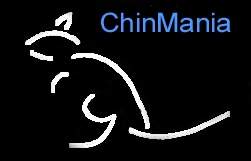
| Albinism |
|
Prevalence |
|
|
Albinos versus Pink White |
|
Pink White is simply a Tower Beige-Wilson White cross and is characterized by a totally white body along with pink ears and reddish/pink eyes. The pink ears and reddish eyes are contributed by the Beige trait. If mated to a Standard Grey, a Pink White [that is heterozygous for Beige, the most common condition] will produce litters that will consist of, on average, 25% Pink White, 25% Wilson White, 25% hetero Tower Beige, and 25% Standard Grey.
From just physical appearance ["phenotype"] alone, it would be difficult to distinguish an Albino from a Pink White. Nevertheless, one would be able to differentiate the two from their offspring [and parentage, if known] and their relative health [more on this later].
|
Albinism is Recessive |
|
Albinism differs from Pink White in which the constituent colour traits, Wilson White [a.k.a. DEW - "Dark Eyed Whites" in other species] and Tower Beige traits are dominant traits.
|
Type 1 Albinism: OCA1 |
|
According to "Lani Ritchey" lritchey@sric.sri.com , you can test for tyrosinase-negativity by soaking a sample of hair bulbs [from a fur follicle] in L-DOPA which is the chemical precusor to melanin. If the hair bulb darkens, then the animal is normally pigmented and other genes are controlling the color [see next paragraph] . If no colour changes occur, then the individual would be tyrosinase negative or OCA1. [This of course assumes that the underlying colour trait is not already Wilson White.]
Most humans affected with OCA1 albinism have white hair, milky white skin, and blue eyes at birth. The irises can be very light blue and translucent such that the whole iris appears pink or red in ambient or bright light. During the first and second decade of life, the irises usually become a darker blue and may remain translucent or become lightly pigmented with reduced translucency.
|
Type 2 Albinism: OCA2 |
|
|
Albinism masks underlying colours |
|
|
Punnett Square for Albinism |
|
The mating of an Albino [ a-a ] with a Standard Grey [ A-A or g-g ] is illustrated by the following Punnett Squares:
|
|
|||||||||||||||||||||||||||||
All of the offspring would be Albino Carriers [ a-A or a-g ] but would look like normal Standard Greys.
|
Health Problems |
|
Visual problems experienced by albinos [human or non-human] may include nystagmus [rapid back-and-forth movement of the eyes] , strabismus [crossed eyes, wandering eye, "lazy" eye, "wall" eye] , photosensitivity/photophobia, either hyperopia [far-sightedness] or myopia [near-sightedness] , and/or astigmatism [blurred vision] , as well as a loss of depth perception caused by the abnormalities in the optic nerves. These problems can been seen in both "complete" and "partial" albinos. A common behaviour associated with these visual problems is the sweeping of the head back and forth sideways in order to generate a proper visual image.
Albinism may be accompanied by a wide range of general health problems. Some types of albinism affect the immune system, liver, or clotting ability, and others may cause other physiological abnormalities such as defects of the kidneys or thymus, anemia, inner ear defects, megacolon, neurological abnormalities, skeletal defects, microphthalmia, osteopetrosis, spina bifida, and sterility, just to name a few. Albinism in general predisposes animals to skin cancer as well as photosensitivity/photophobia. In some species, some types of albinism are even lethal!
Longevity: An albino typically has only 1/2 to 2/3 of normal life expectancy.
|
Sources of information |
|
One should also consult his references NOAH, The National Organization for Albinism and Hypopigmentation , and International Albinism Center at the Univeristy of Minnesota
Although I cannot vouch for its accuracy, another interesting site is http://albinism.med.umn.edu/facts.htm
Created by ChinMania
© 1999-2007 ChinMania & AniMania The concept, design, and all content of ChinMania the Chin Colour Calculator the Chin Colour Crosses the Chin Owners Directory as well as the terms "ChinMania", "Chinmania", "chinmania", "Chin Mania", "Chin mania", "chin mania", "ChinManiac", "Chinmaniac", "chinmaniac", "Chin Maniac", "Chin maniac", "chin maniac", and any derivations thereof, is copyrighted by ChinMania and AniMania ( © 1999-2007 ChinMania & AniMania ) and may not be used without the express written permission of ChinMania and AniMania.
